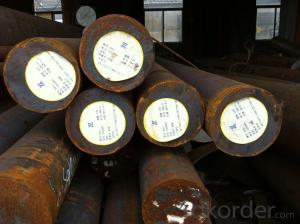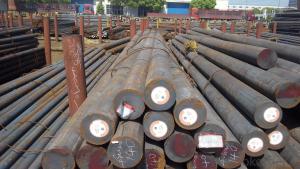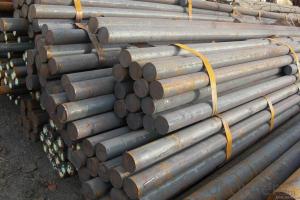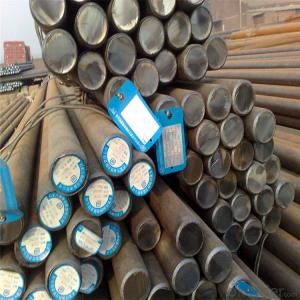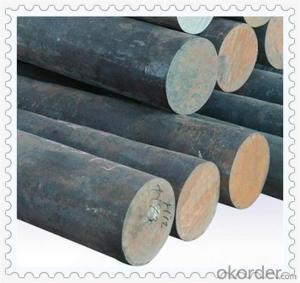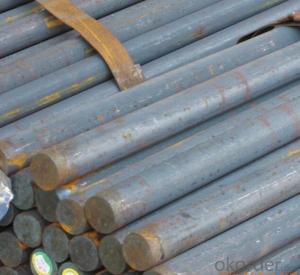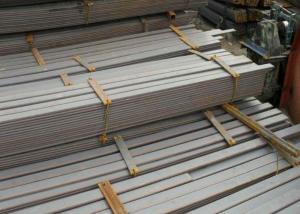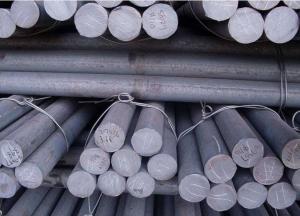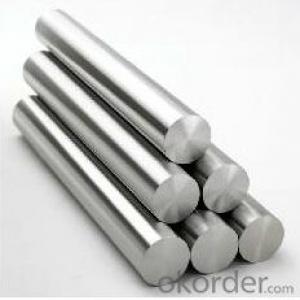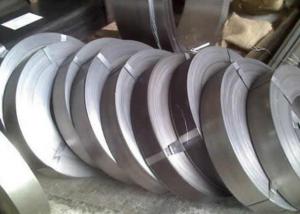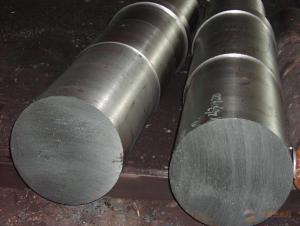Low Carbon Steel SAE1045 S45CCR S55C
- Loading Port:
- China main port
- Payment Terms:
- TT OR LC
- Min Order Qty:
- 30 m.t.
- Supply Capability:
- 10000 m.t./month
OKorder Service Pledge
OKorder Financial Service
You Might Also Like
Specification
Low Carbon Steel SAE1045 S45CCR S55C
Product Information:
Heat treatment of c45 carbon steel
1.Quench:1000-1040`C via 600`C and 850`C, preheating oil or wind cooling
2.Temper temperature should be higher than working temperature in order to stabilize the working size of mold
3.Heat up to 650°C of average temperature in order to eliminate the machined stress, 500 °c air cooling after electric cooker cooling
4.Tempering, 800-850 °c ,slow cooling after diathermia
5. Melting Process of SKD61 steel rod
EAF: Electric Furnace+LF+VD(Optional)
Application of c45 carbon steel
(1)Can be used in many fields such as building, automobile, shipbuilding, petrochemical, machinery, medicine,
food, electric power, energy, space, building and decoration, etc.
(2) Can be made into mould template, mortise pin, column
(3)This kind of steel have good mechanical property, is widely used in structural parts which may support
stress alternation, especially made into some connecting rods, bolts, wheel gear...
(4) This kind of steel is the most common blanks and materials of shaft part
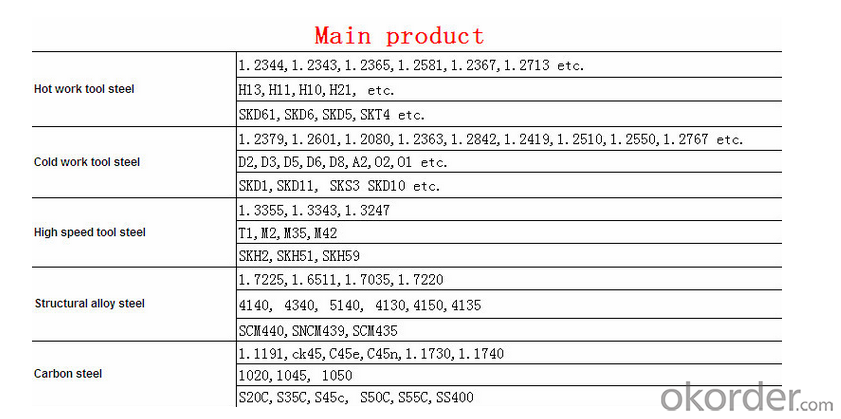 Product Overviews:
Product Overviews:
| Product Name | Typical Grades | Diameter(mm) | Standard adopted |
| Carbon Steel | 20 (1020/S20C/C22) | Ø16-Ø300 | GB/SAE/JIS/DIN |
| 40 (1040/S40C/C40) | |||
| 45 (1045/S45C/C45) | |||
| Bearing Steel | GCr9 (51100/SUJ1) | Ø12-Ø250 | |
| GCr15 (52100/SUJ2/100Gr6) | |||
| GCr9SiMn (A485-Gr.1/SUJ3) | |||
| Cr-Mo Steel | 20Cr (5120/SCr420H/20Cr4) | Ø12-Ø250 | |
| 40Cr (5140/SCr440/41Cr4) | |||
| 42CrMo(4140/SCM440/42CrMo4) | |||
| Gear Steel | 20CrNiMo | Ø16-Ø600 | |
| 20CrMn(5115/SMnC420/20MnCr5) | |||
| 20CrNiMo(8620/SNCM220/20CrMiMo2) |
Product Show:
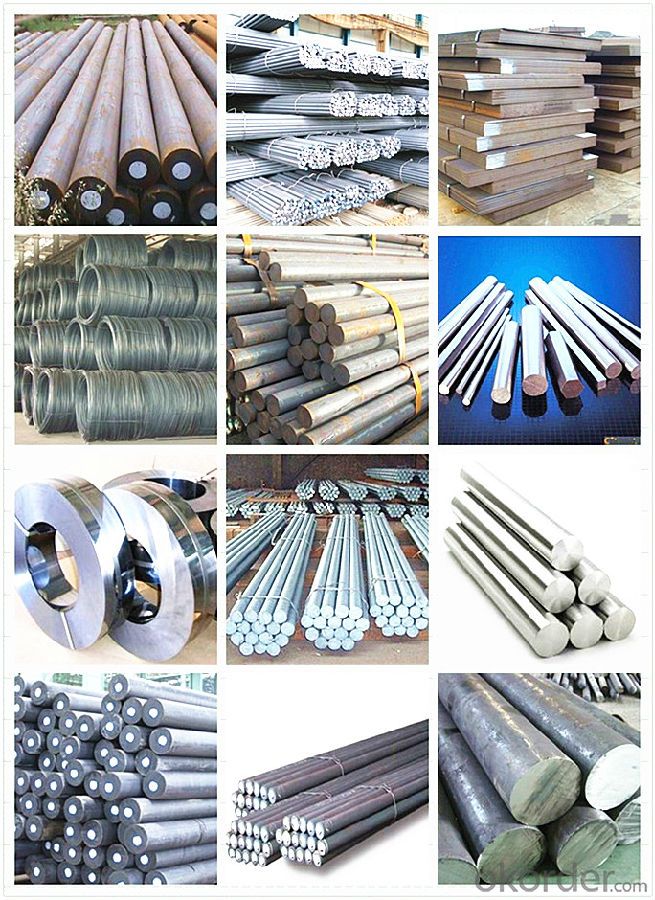
Our Advantages:
· Industry experience over 20 years.
· Shipment of goods -More than 70 countries worldwide.
· The most convenient transport and prompt delivery.
· Competitive price with best service.
· High technical production line with top quality products.
· High reputation based on best quality products.
With our experienced, enthusiastic and dynamic staffs, we assure to bring you the products with best quality, reasonable prices and good after-sales services under the motto: Friends First, Business After.
Communication, Experience, Expertise and Best efforts are our Promises to you.
- Q: Can special steel be used for making power generation equipment?
- Indeed, power generation equipment can be constructed using special steel. Specifically engineered to possess enhanced characteristics like high strength, resistance to corrosion, heat, and wear, special steels are well-suited for use in arduous situations such as power generation equipment that often operates under conditions of elevated temperatures and pressures. Power generation equipment, including turbines, boilers, and generators, necessitates materials capable of enduring harsh operational circumstances and delivering dependable performance over an extended duration. Special steel grades, such as stainless steels, nickel-based alloys, and heat-resistant steels, are commonly employed in the construction of power plants and power generation equipment. Stainless steels are frequently utilized in power generation due to their exceptional resistance to corrosion, which is vital for equipment exposed to significant moisture or hostile environments. Nickel-based alloys are renowned for their outstanding strength at high temperatures, making them well-suited for components subjected to extreme heat, such as turbine blades or exhaust systems. On the contrary, heat-resistant steels are specifically designed to retain their mechanical properties at elevated temperatures, rendering them suitable for applications like boilers and heat exchangers. In conclusion, special steel possesses a variety of desirable properties that render it highly suitable for the production of power generation equipment. Its strength, corrosion resistance, heat resistance, and wear resistance make it an excellent choice for enduring the challenging conditions encountered in power plants, ensuring the efficient and reliable generation of electricity.
- Q: What are the main factors affecting the toughness of special steel?
- The main factors affecting the toughness of special steel include its chemical composition, heat treatment process, and microstructure. The chemical composition determines the presence of alloying elements that can enhance toughness, such as nickel, chromium, and molybdenum. The heat treatment process, including quenching and tempering, can alter the microstructure of the steel, influencing its toughness. A fine and uniform microstructure with a controlled distribution of phases can enhance toughness. Additionally, factors like grain size, inclusion content, and the presence of residual stress can also impact the toughness of special steel.
- Q: How is high-strength alloy steel used in the production of structural components?
- High-strength alloy steel is commonly used in the production of structural components due to its exceptional strength-to-weight ratio. It provides superior tensile strength and toughness, making it suitable for supporting heavy loads and withstanding high stress and impact. This steel is often used in the construction of buildings, bridges, and other infrastructure, as well as in the manufacturing of machinery and vehicles. Its application helps enhance structural integrity, durability, and safety while minimizing the weight and material requirements of these components.
- Q: How does special steel withstand high-velocity impacts?
- Due to its unique properties and composition, special steel possesses the capability to endure high-velocity impacts. A crucial factor contributing to this capability is its high strength and hardness, which allows it to withstand extreme forces without deforming or fracturing. Additionally, special steel often incorporates alloying elements like chromium, molybdenum, nickel, and vanadium, which enhance its exceptional toughness and resistance to impacts. Furthermore, special steel frequently undergoes heat treatment to improve its mechanical properties. This involves processes like quenching and tempering that modify the steel's microstructure, resulting in a refined and strengthened structure. This heat treatment also augments the steel's capacity to absorb and disperse energy during high-velocity impacts, thereby lowering the risk of failure. Moreover, special steel is frequently tailored with specific alloys and compositions to optimize its performance in specific applications. For instance, certain grades of steel are engineered specifically for armor applications, where they must endure high-velocity impacts from projectiles. These steels may incorporate additional elements like boron or titanium, further enhancing their ability to resist penetration and deformation under extreme loads. In conclusion, special steel's ability to withstand high-velocity impacts can be attributed to its high strength, hardness, toughness, and impact resistance. Its distinctive composition, heat treatment processes, and targeted design render it a dependable choice for applications where impact resistance is of utmost importance.
- Q: How is tool and die steel used in the manufacturing of molds and dies?
- Tool and die steel is an essential material used in the manufacturing of molds and dies due to its high strength, toughness, and wear resistance properties. It is used to create precise and durable molds and dies that are capable of withstanding the high pressures and temperatures involved in the manufacturing process. This steel is carefully designed and machined to produce intricate shapes and forms required for various industries such as automotive, aerospace, and electronics. Tool and die steel ensures the longevity and accuracy of molds and dies, leading to efficient and high-quality production in manufacturing processes.
- Q: Can special steel be used in the semiconductor manufacturing industry?
- Yes, special steel can be used in the semiconductor manufacturing industry. Special steel alloys, such as stainless steel and tool steel, are often used in the construction of semiconductor equipment and components. These steels are chosen for their high strength, corrosion resistance, and thermal stability, which are essential properties for withstanding the harsh environments and processes involved in semiconductor manufacturing. Additionally, special steel can be engineered to have low levels of contamination, making it suitable for applications where purity is crucial, such as in cleanroom environments.
- Q: What are the different methods of surface anodizing for special steel?
- Surface anodizing for special steel can be achieved through various methods, each with its own advantages and applications. Below are some of the different techniques available: 1. Chromic Acid Anodizing: By immersing the steel in a chromic acid solution, a thin, hard, and corrosion-resistant oxide layer forms on its surface. This method is particularly effective for enhancing durability and aesthetic appeal, as it enables excellent adhesion for paint and other coatings. 2. Sulfuric Acid Anodizing: Widely utilized, this method involves immersing the steel in a sulfuric acid bath and applying a direct current to create an oxide layer on the surface. It offers exceptional corrosion resistance, increased hardness, and improved wear resistance. Additionally, it provides a solid foundation for achieving various colors and finishes by applying dyes or sealing. 3. Phosphoric Acid Anodizing: Primarily used for stainless steel, phosphoric acid anodizing entails immersing the steel in a phosphoric acid solution and applying a direct current. This process generates a protective oxide layer that enhances corrosion resistance and yields a uniform matte finish. Phosphoric acid anodizing is commonly employed in applications where aesthetics are not a priority. 4. Titanium Anodizing: This method involves anodizing steel using titanium electrodes, resulting in a thick oxide layer on the surface. The outcome is improved corrosion resistance, increased hardness, and enhanced wear resistance. Titanium anodizing finds significant usage in industries like aerospace, where robust and durable surface properties are vital. 5. Hard Anodizing: Distinguished by its specialized nature, hard anodizing produces a thick and highly durable oxide layer on the steel surface. It achieves this by employing higher voltage and lower temperature during the anodizing process. Consequently, it enhances hardness, wear resistance, and electrical insulation properties. Hard anodizing is particularly valuable for applications requiring superior abrasion resistance, such as parts exposed to heavy wear or friction. These are merely a few examples of the various methods available for surface anodizing of special steel. The selection of the most suitable technique depends on specific application requirements, desired properties, and the type of steel being treated. It is crucial to consult with industry experts to determine the optimal anodizing method for a particular steel application.
- Q: How is special steel stored and transported?
- To maintain the quality and integrity of special steel, it is handled with utmost care during storage and transportation. During storage, the steel is kept in a controlled environment with the right temperature and humidity levels to prevent corrosion and damage. Covered warehouses and storage facilities specifically designed for steel are used to shield it from rain, snow, and sunlight. When it comes to transportation, different methods are employed depending on the quantity and distance. For short distances, smaller amounts of steel are transported using trucks equipped with flatbeds or enclosed trailers. These trucks are designed to securely hold and protect the steel, ensuring it does not shift or get damaged during transit. However, for longer distances or larger quantities, rail or sea transportation is preferred. Rail transportation offers a smooth and stable journey, minimizing the risk of damage caused by vibrations or sudden movements. Specially designed railcars are used to securely store and protect the steel during transit. Sea transportation involves loading the steel onto shipping containers or specialized vessels. Containers are sealed and secured to prevent any movement or damage during the journey. Specialized vessels, such as roll-on/roll-off ships or heavy-lift vessels, are used for oversized or extremely heavy steel components. In all cases, special steel is carefully packaged and secured using appropriate materials like wooden crates, steel strapping, or plastic wrapping to prevent scratches or dents. The transportation process is closely monitored, and necessary precautions are taken to ensure the steel reaches its destination in optimal condition. Overall, the storage and transportation of special steel require thorough planning, proper handling, and the use of specialized equipment to safeguard its quality and protect it from potential damage or degradation.
- Q: What are the main characteristics of high-speed steel forgings?
- The main characteristics of high-speed steel forgings include high hardness, excellent wear resistance, good toughness, and the ability to retain their hardness and strength at elevated temperatures. They also exhibit good machinability, high dimensional stability, and resistance to deformation under heavy loads.
- Q: How does the cost of special steel compare to regular steel?
- The cost of special steel is generally higher than regular steel due to its unique properties, manufacturing processes, and limited availability.
Send your message to us
Low Carbon Steel SAE1045 S45CCR S55C
- Loading Port:
- China main port
- Payment Terms:
- TT OR LC
- Min Order Qty:
- 30 m.t.
- Supply Capability:
- 10000 m.t./month
OKorder Service Pledge
OKorder Financial Service
Similar products
Hot products
Hot Searches
Related keywords
